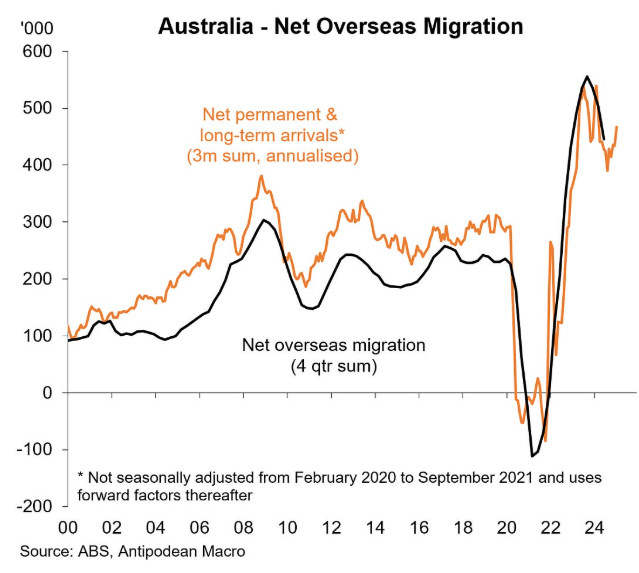CoreLogic data showed that the median household spent a record share of their incomes on rent at the end of 2024.
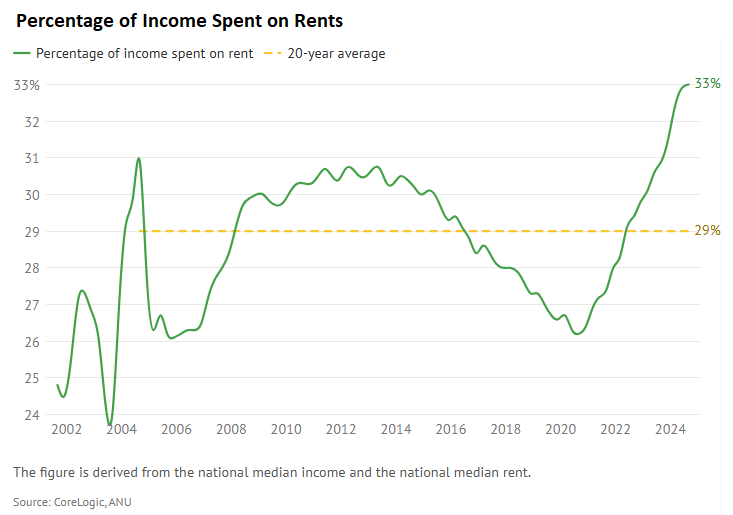
PropTrack’s rental report also showed that the share of rental homes that were affordable to tenants hit a record low at the end of 2024.
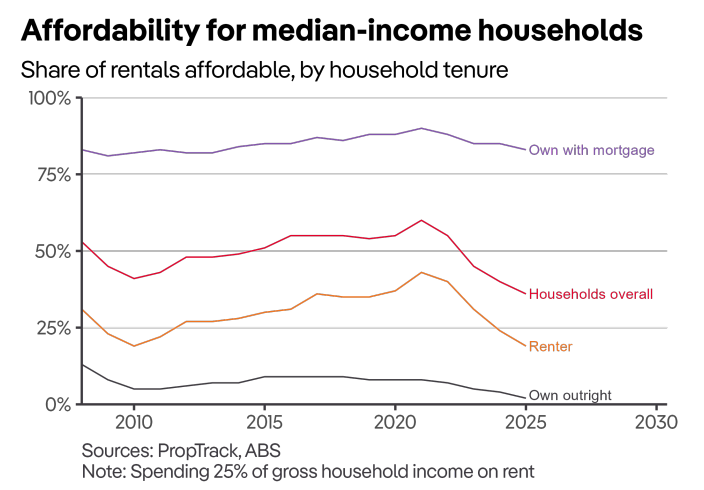
CoreLogic has released its quarterly rental report, which noted that since March 2019, national rents have surged by 38.4%—the equivalent of an extra $182 per week or $9,442 annually.
“The 38.4% increase in rents seen over the past five years, equivalent to an additional $182 per week or $9,442 per year, has seen households dedicate more income than ever before to paying rent, with renters adjusting to this additional burden by forming larger households, particularly in the capitals”, CoreLogic noted.
The rise in the average household size, combined with lower net overseas migration, has moderated rental growth.
“The further increase in the average household size due to worsening affordability, along with the slowing in population growth, continues to put downward pressure on rental demand and, subsequently, rental value growth”, CoreLogic noted.
“Despite the quarterly increase in momentum, the annual change in national dwelling rent values has continued to lose steam, with the 3.8% increase seen over the 12 months to March the lowest rolling annual change in four years”.
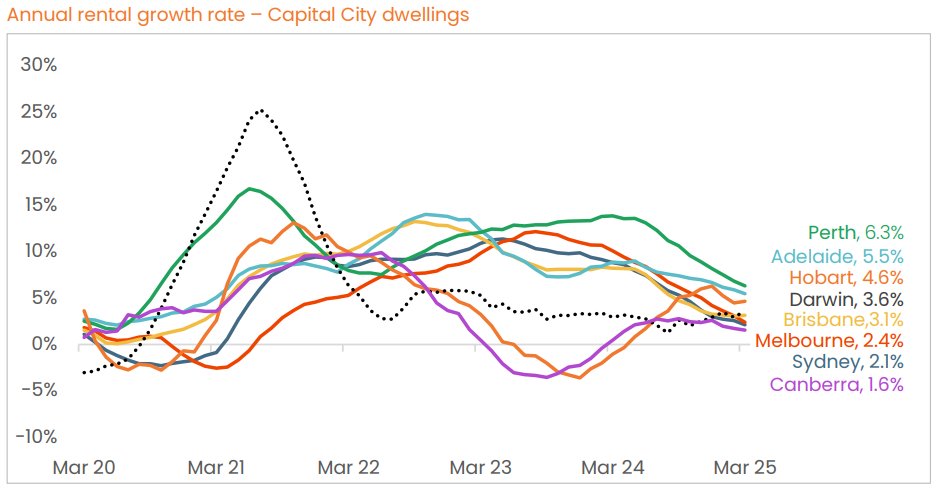
Source: CoreLogic
However, CoreLogic notes that Australia’s rental market remains tight with an acute lack of listings and a historically low rental vacancy rate.
“Despite the easing in demand, advertised rental listings remain well below average. Around 99,000 rental properties were listed for rent nationally over the four weeks to 6 April, 22.1% below the historic norm for this time of year”.
“As a result, vacancy rates tightened to 1.6% in March, down from 2.0% in December and just 10 basis points above the record low seen in March 2024”.
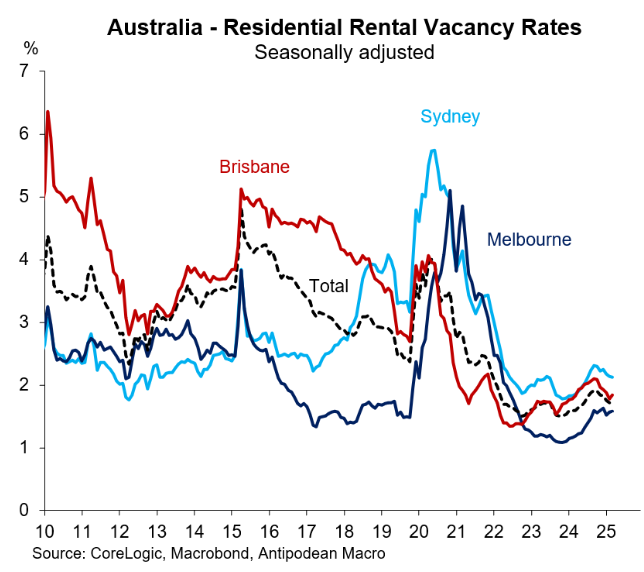
As long as the federal government maintains a high immigration policy, Australian renters will remain under pressure.
